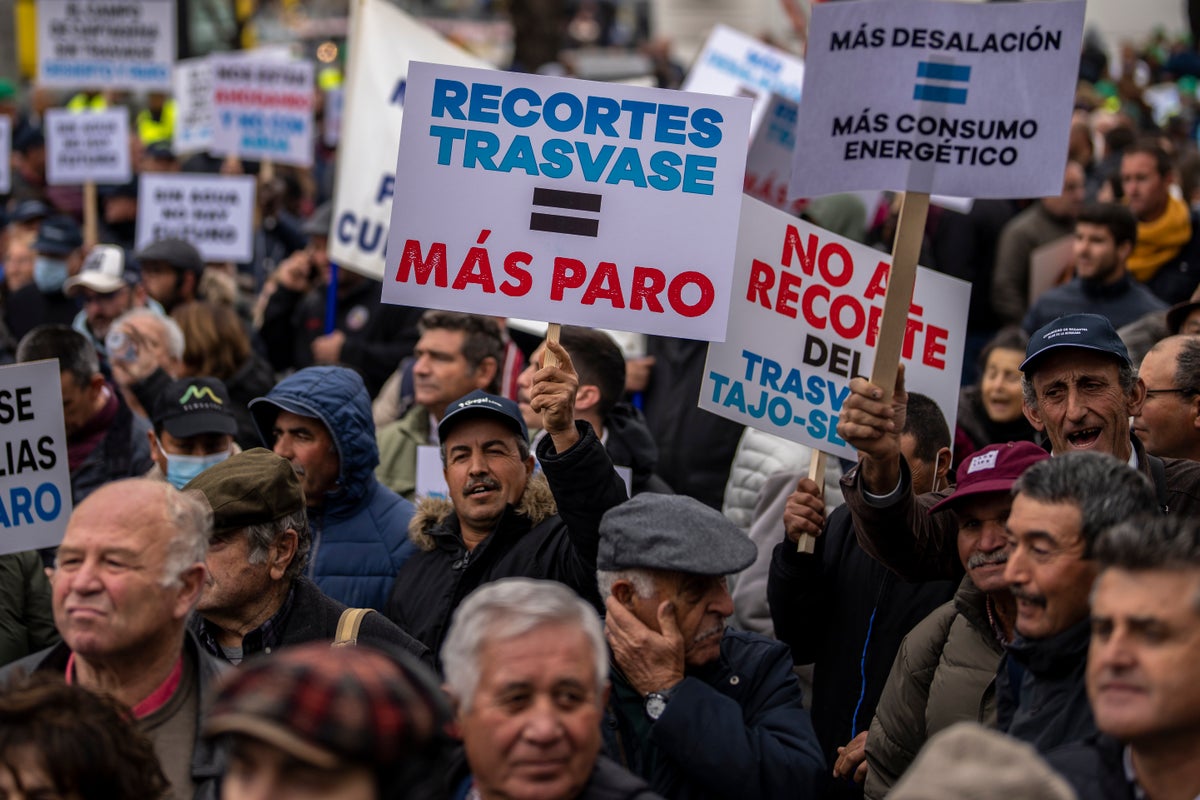
Farmers protested in Madrid on Wednesday against a governmental order to provide ecological protection for a river, a move they see as a threat to the water resources they need to irrigate their crops.
Several hundred protesters — bused in from the southeastern region impacted by the plan — rallied in front of Spain’s ministry for ecological transition, demanding the resignation of Minister Teresa Ribera.
“It is a joy to see all of you here because it means the agriculture of southeastern Spain is still alive and will remain so despite the politicians we come to visit today,” Lucas Jiménez, president of the Central Irrigation Union, told the crowd.
“Let them leave the water in the hands of those who understand water.”
The farmers are opposing a ministerial decision to establish a new minimum water level for the Tagus River based on maintaining its ecological health. They fear that will mean less water for their fields.
The dispute comes after the southern European country sweltered under its hottest year on record and an extended drought that devastated crops like one of its main staples, the olive.
The Tagus is the Iberian Peninsula’s longest river, running 1,007 kilometers (626 miles) from eastern Spain all the way into Portugal where it spills into the Atlantic Ocean. But relatively close to its source there is a manmade canal that reroutes some water southward to the Segura River. This southeastern coastal area relies on that water to irrigate the fruits and vegetables it exports to Europe and beyond.
Until now, the Tagus was the only river in Spain without an official “ecological threshold” that used environmental criteria to establish the minimum flow it needs to ensure its ecological health, the ministry argued in defense of its decision. The decision comes after five court orders that an ecological minimum be set for the Tagus.
The Tagus had until now a minimum of six cubic liters per second, according to a threshold that was established without taking into account ecological factors. That has increased to seven cubic liters this year and will progressively grow to 8.6 cubic liters per second in 2027.
To help offset any future reduction in water that passes through the canal to the Segura, the ministry is investing to modernize desalination plants and equip them with solar panels, with the intention of reducing the cost of the water they generate.
The ministry also argues that the Tagus has decreased by 12% since 1980 and only a stricter control will prevent episodes of it drying up completely, as occurred in 2017.
Ribera asked on Tuesday for this not to become a “water war,” insisting that Spain must adapt to climate change.
“We have to prepare for two types of excess, years with long cycles of extreme drought and periods of very intense flooding,” she said.







